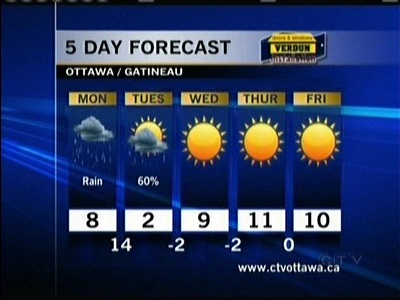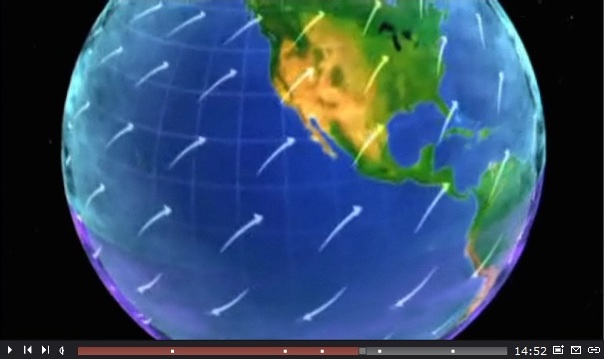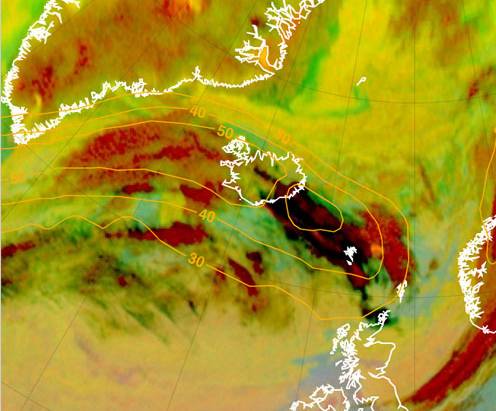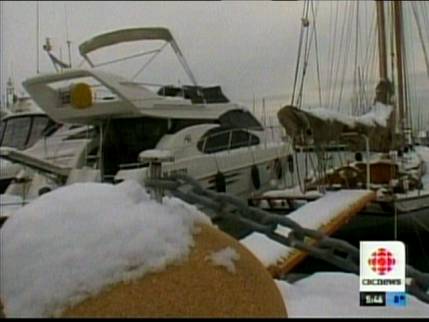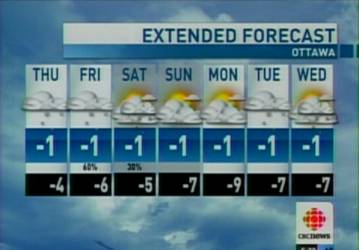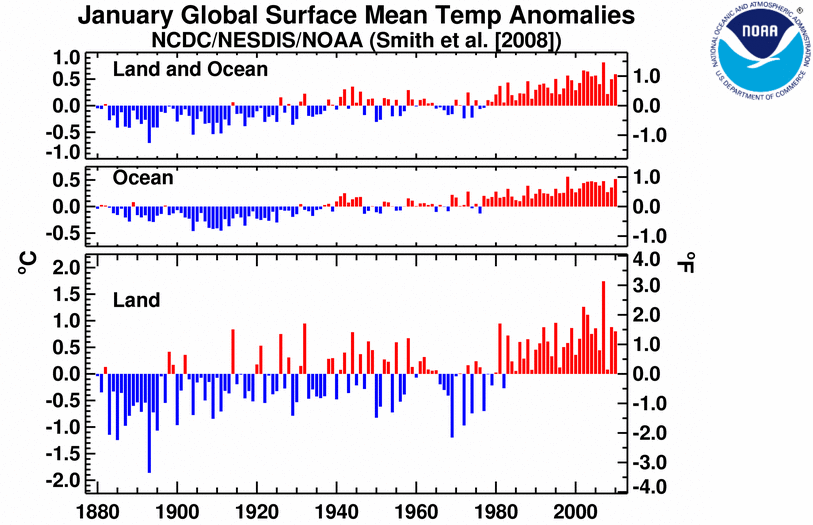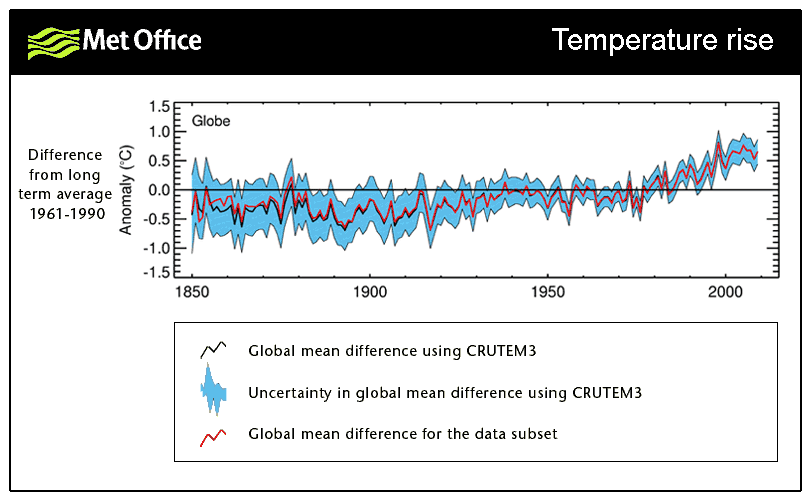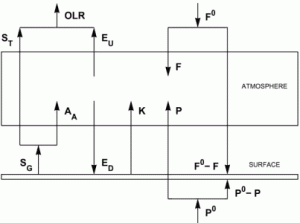I’m reading an opinion piece in last week’s New Scientist, by Michael Le Page and Catherine Brahic. It’s titled, “Why there’s no sign of a climate conspiracy in hacked emails”. It is intended to reassure us that “Climategate” notwithstanding, we should trust the basic science. Yet I feel that it misses the point on all counts.
Take the title, for starters. While I am sure there are conspiracy nuts out there who view the hacked e-mails as a smoking gun, I think many more people see a more nuanced picture: the e-mails prove no conspiracy, but they do demonstrate contempt towards dissenters and the general public, not to mention the scientific process, and they do raise questions about the validity of the so-called “scientific consensus” on climate.
But it’s not just the title that’s deceptive. The authors raise five points, in the form of questions and answers. At least that’s how the article appeared in print; on-line, two of the questions were turned into unambiguous statements, according to which we are “100% sure” that the world is getting warmer and it’s because of greenhouse gases as the main cause. No, we are not 100% sure. If you want to assign a percentage, then take the data, fit the models, and show us a covariance matrix that tells us exactly how sure we are that a long-term trend is present. Leave this “100%” nonsense to political activists.
The print edition stuck to the question-and-answer form. “How can we be sure that the world really is warming?” they ask, but it’s a misleading question: of course the world is warming, the real question is, how much of that warming is due to short/medium/long term natural periodicities, and how much of it is due to a more sudden (e.g., linear, exponential, etc.) trend that may be due to human activity. Do we have enough data to distinguish unambiguously (never mind 100%, 1-sigma can do nicely) natural fluctuations from more direct trends?
Then they ask, “How do we know greenhouse gases are the main cause?”, and assure as that “The physics is clear: carbon dioxide is a greenhouse gas, greenhouse gases warm the atmosphere, and CO2 is accumulating in the atmosphere.” This is pure nonsense of course, since I could just as well say something like, “urine is a liquid, adding a liquid to the oceans increases ocean volume, I keep peeing into the ocean, hence cities will be swallowed by rising sea levels”. Their answer sounds more like an attempt to divert attention away from genuine questions, such as those concerning the effectiveness of CO2 as a greenhouse gas (CO2 is a very weak greenhouse gas; for instance, if rising CO2 levels somehow reduced the amount of water vapor in the atmosphere, the net effect would be global cooling), the accuracy of models describing the effects of CO2 in the atmosphere (I’ve read a paper, for instance, that questions the ability of widely used physics models to deal properly with the discontinuity of the atmosphere-surface boundary), or the “chicken-and-egg” question concerning the climate record, namely the extent to which CO2 caused warming trends or rising temperatures caused an increase in CO2 during past warm periods.
Their third question reads, “So why are scientists ‘fixing’ temperature data?”, which they answer by explaining that raw data almost always has to be manipulated to correct measurement problems or reconcile measurements made in different ways. True. But that is no excuse to discard the raw data. Not to mention that the data manipulation that caught so many people’s attention in the Climategate e-mails was not about fixing up raw data… it was about using two incompatible sets of data to change the appearance of a fitted curve, lest it gives the wrong impression to a scientifically illiterate audience. They do address this issue separately in the on-line version, but the explanation they offer raises its own questions: for instance, they say that “there has been no attempt to conceal this”, but how does that reconcile with the phrase, “hide the decline”, quoted from the hacked e-mails?
Lastly, their final two questions are about the attempts to suppress skeptical papers and attempts to prevent data from being released. We’re told that an independent inquiry is still ongoing, and in any case, the scientists may not have had the right to release the data. That’s a non-answer. You don’t need an independent inquiry to explain how it is acceptable to “redefine the peer review process” just to keep skeptical papers out, and as to the data, how about answering the question insofar as it concerns data that they did have the right to release?
All in all, I could have come up with much better arguments myself… instead of attempting to side-step the questions, I’d have tried to address them. Data were manipulated because a fit indeed gave a curve that would give the wrong impression to the uninitiated, and adding the instrumental data to the fossil temperature record seemed like an honest “trick” to avoid this. Skeptical papers were suppressed because those involved may genuinely believe in their science, may genuinely believe that many of the skeptics are motivated by something other than pure scientific curiosity (especially if they happen to be financed by, say, a friendly neighborhood oil company), and may genuinely believe that we just don’t have time for this nonsense while the planet is heading towards a global disaster. Data were withheld because otherwise, all the time in the world would not be enough to deal with clowns who take that data, ignorantly (or nefariously) manipulate it, and come up with nonsense conclusions. These explanations may not justify the actions taken, but they might be closer to the truth in the end… and supposedly, truth and integrity are the only real currencies that science has at its disposal. Currencies which will be needed badly in the coming decades, in order to convince the inhabitants of Earth not to trash their planet beyond repair… regardless whether or not CO2 leads to global warming.

